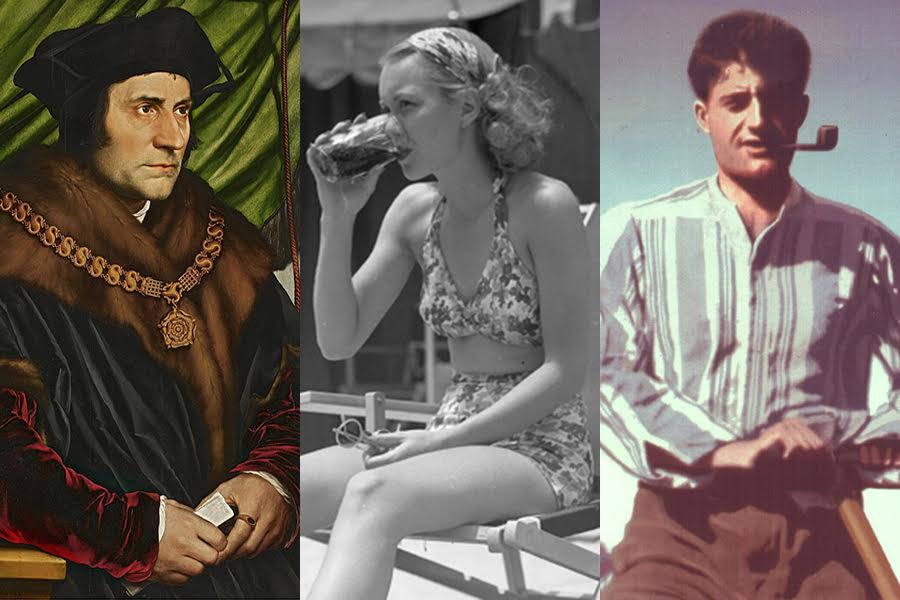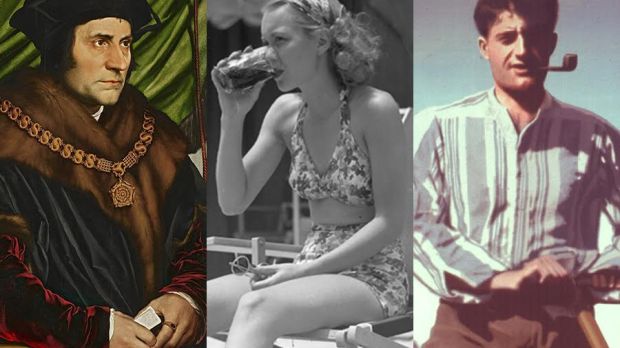Not long ago, someone on Facebook messaged me: “If I didn’t know you were OSB, I’d think you were OP.”
The person is a Lay Dominican — what used to be called a Dominican Tertiary (tertiary referring to a “third order” within the Order of Preachers (OP). Nowadays, the language has been simplified, but I looked at the message and wondered what people would think about these letters being attached to laypeople, who are neither monks in cloister, nor conventual friars.
There is nothing mysterious about it. The great religious orders of the church have always made room for laypeople who want to share in their mission and spirituality, and some of them have even progressed so far in holiness as to be proclaimed saints. One of them, St. Catharine of Siena, OP, is a Doctor of the Church.
“If you become a Dominican Tertiary, your chances of becoming a saint will go up by 75 percent!” a Dominican nun once joked to me. “There are lots of Lay Dominican saints; nuns, not so much.”
The Order of Preachers does have bragging rights to an impressive number of lay-members in the canon of saints, beatos and venerables. Blessed PierGiorgio Frassati was one, as were saints Martin de Porres and Rose of Lima.
As a Benedictine Oblate, I am quick to counter that the “OSB” have their share of holy laymen and women, including saints Thomas More, Thomas Becket, Frances of Rome and King Henry II, the Servant of God Dorothy Day and an eclectic collection of writers, and scholars, including Paul Claudel, Rumer Godden, Joris-Karl Huysmans, Walker Percy and Jacques Maritain.

So what are the differences between Benedictine Oblates, Lay Dominicans and, for that matter, Secular Franciscans or the Third Order Carmelites? The distinctions are not great but they nevertheless matter.
Third (or Secular) Orders are literally “third” parts of the Dominican, Franciscan and Carmelite families and the laypeople who join them try to adapt the charisms and characteristics of each order into their daily routines, which in turn tends to shape their lives in ways reflective of the lives of their vowed brothers and sisters.
For instance, a Third Order Carmelite friend of mine tended toward the mystical. Penitential, silent and deeply prayerful, she owned a Catholic bookshop that was short on “Catholic kitsch” and long on creating a prayerful space for “visitors, not customers.” The store rarely turned a profit, but people were always there, asking for her prayers. When she died, her daughter tried to turn it into a “real” Catholic bookstore, and it didn’t last six months.
My Secular Franciscan friends tend precisely toward the jolly and down-to-earth pragmatism of Franciscans. They are open, generous, friendly, hardworking and independent, and they busily serve the larger community through action and outreach. Meanwhile the Lay Dominicans I know are just like my nun friends: quiet and bookish, heavy readers who nevertheless will not hesitate to witness their faith to others.
Third Orders are usually part of provinces; they tend to meet in chapters, once or twice a month, and to assist the work of their community.
Benedictine Oblates differ only slightly. While the Third Orders are attached to their chapter, Oblates are attached to a specific monastic house and are literally considered part of that community. Albeit “lay,” they are, as a Benedictine of Ryde Abbey said, “true sisters, true brothers” to their communities. Oblates attached to a community will try (if possible) to visit their house at least once a year for retreat. As Benedictines, they will try to pray as much of the Divine Office as they can within the demands of the day, and to adapt themselves as much as possible to the Rule of Saint Benedict, particularly with regard to stability (to their monastic house, their marriage, their family and commitments), outside ministry and hospitality (Benedict says to see Christ in everyone you meet and open your doors to all visitors. This is my biggest challenge).
Whatever spirituality attracts the lay member, they do not simply “sign up,” as though joining a club. There is a novitiate period of formation — usually between one to five years — before one makes a “full profession” or, for a Benedictine, a “Final Oblation.”
Making a full profession to a religious order is a serious event, and when one has signed his or her profession and lain it upon the altar, one copy of it is sent to Rome for archiving.
At profession, one usually takes a new name, and often that name will be one familiar to the order. Pier Giorgio Frassati, for example, took the name Girolamo after the Dominican Fra Girolamo Savonarola. Sometimes, when writing seriously of his faith, he would sign his letters “fra Girolamo,” claiming his profession, which was within his right. A Secular Franciscan friend will sometimes tag her signature with “OFS”. Occasionally, among friends, I will sign off on an e-mail with my Benedictine name, adding “Obl.OSB.”
Lay professions are not vows but promises, and while Oblates will renew their professions, most Third Orders eventually “profess for life.” Although they may wear scapulars or medals as signs of their profession, a Tertiary or Oblate is only entitled to wear the robes with special permissions, or upon death. A few years ago the actress Jane Wyman, another Lay Dominican, was buried in a Dominican habit.
Lay profession does not confer holiness upon an individual, but if one has identified within oneself an attraction to a specific charism, a specific “way” of Catholic spirituality that helps give expression, direction and focus to their the Christian life, one could do worse than pursue the calling. There is much richness in these ancient Rules, as so many have discovered, including (since we must not forget the saintly Secular Franciscans) saints Joan of Arc and Bernadette Soubirous; Dante Alighieri, Michelangelo, Blessed Peter of Siena, Franz Liszt, Charles Gounod and Louis Pasteur.
Elizabeth Scalia is Editor-in-Chief of Aleteia’s English edition

